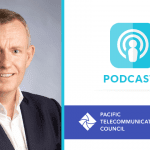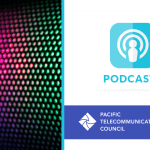 Marc Halbfinger, PCCW Global CEO, advises us to take a big picture look at innovation in a volatile, uncertain, complex, and ambiguous marketplace
Marc Halbfinger, PCCW Global CEO, advises us to take a big picture look at innovation in a volatile, uncertain, complex, and ambiguous marketplace

Marc Halbfinger
CEO, PCCW Global
Hong Kong SAR China
No one doubts our industry is in the grip of a gigantic secular change. But when Marc Halbfinger reflects on the current outlook, he is prepared to challenge notions of how to describe it. Are we in a boom? Is it sustainable? What’s the best interpretation?
He pauses at these questions, and then reflects: “Boom is usually used as a connotation of economics, and in an economic environment there will be winners and losers, particularly as change takes place. Whereas sustainable is usually a word used to talk about consistency and stability. Boom and sustainability do not often go hand in hand.”
What does go hand in hand are ideas of innovation and disruption, he addresses, and that the ICT market is in a state of disruption essentially brought by the innovation we now see. More than that, he suggests, the best interpretation is disruption and innovation are effectively synonymous.
“Innovation [in this environment] is critical,” he expresses. “If you are not willing to attempt innovation, or leverage someone else’s innovation, you may not succeed.” However, he contends: “Innovation or disruption: that is the piece which is sustainable.”
The ability to embrace the disruption will be key in the future, he argues, essentially making a question of business survival. He continues: “Those who do not accept innovation will be exchanged in the value equation for those who will.” He declares, by definition, a disrupted marketplace will continue, but not necessarily as it is: “Will owners of value today have the same identities as owners of value tomorrow? Perhaps not. But that is the nature of economic transition as we go from one environment to another.”
Blockchain: Disruptive Unification?
The service provider sector worldwide, he asserts, is no stranger to either disruption or innovation. It is certainly under extreme pressure at the moment. “The disruptive factors do not just involve my employer PCCW Global, they are impacting everyone in the ICT community at every level. Disruption, innovation and chaotic activity will be the normal states for us [as an industry].”
But in all of this, a new and potentially highly disruptive factor has arrived: blockchain. Service providers might soon have the tools to radically transform their own operations, particularly in the back-office, and inter-carrier relationships through technologies like blockchain. As part of the ITW Global Leaders Forum, which he is currently chairing, there are initiatives to trial new blockchain ideas, demonstrate benefits, and establish industry governance.
He contends firmly: “The industry has to head to digital transformation.” He continues: “The market environment requires us to find effective methods to automate, to audit, be transparent, and adjudicate any dispute in the most effective manner to deliver value to end users at the pace they are now expecting.”
The resulting transformation and impact on service providers is likely to be both wide and deep. He argues, “It is important to step back and identify what is important to an industry. Blockchain can be used by an individual service provider. But in this instance, we have chosen to look at how it can be used to facilitate interoperability amongst service providers for common sets of various forms of ICT traffic and services.” He specifies the advantages: “Less fraud, less disputes, faster response times, a leaner approach to cashflow.” He predicts it will open up the opportunity for more creative productization by a ubiquitous construct that facilitates all service providers in the ICT space.
“We don’t believe that any one service provider can be a leader,” he remarks. In this view, the industry needs to take a collective view on blockchain implementation, and agree a governance construct around the choices on offer.
A big advantage, he argues, is that ICT service providers even in competition can and do work together operationally to provide complete service to an end user. He continues: “If we can now make that process automated and more efficient, we open the door to utilize resources for more creative opportunities on the front end, but first we need to organize ourselves, and then we can organize individually.”
Will Service Providers Evolve?
Meanwhile, however, that ongoing disruption will force new ideas, roles and structures in terms of what it means to be a service provider. He argues it should be seen in a fundamental context: “[Being] a service provider means to provide service.” As a follow-up, the role of the service provider, he contends, then becomes the ability to translate whatever is happening disruptively, or innovatively, to an end user of any kind. “The underlying tenet is that your service culture should never go away.”
Service providers do evolve and do need to evolve, he affirms. He points to PCCW Global itself as an example of evolution: from a largely internal arm of Hong Kong’s largest telco providing international connectivity to developing value by becoming a global player. “We saw the opportunity to reshape Hong Kong as a global hub, and the business has evolved step by step into becoming truly global.
PCCW Global, he predicts, will continue to follow pragmatic economic direction, particularly, the evolution of Asian economies. China’s One Belt, One Road Initiative will likely provide more impetus in the growth. Globally, the company has extended reach into the Middle East, Africa, Americas, and Europe.
Structurally, there is likely to be blurring of many definitions, particularly in terms of what global provision really means. “We must view the world as a complicated place that must be served as a ubiquitous unit to an end user that will have many forms of demand.”
Leading in such an environment requires setting the right destination. Agile management approaches will increasingly be the norm. In some cases, leaders will need to communicate better, resolving tensions when that destination, or form-function changes.
And change it probably will, he states. “Change is inevitable, the challenge is the pace of change. Disruption is something that we need to embrace, and if necessary, force upon ourselves. It is difficult to keep up with the pace, but I think that we will learn as an industry, over time, how to acclimate to that as well.”
Are there downsides? “I am an optimist by nature,” he responds. “I would prefer to say [the upcoming era] will just be different. I suggest we neutralize emotional thoughts of “positive” and “negative,” and recognize that today’s sustainability is in fact constant change through innovation.”







